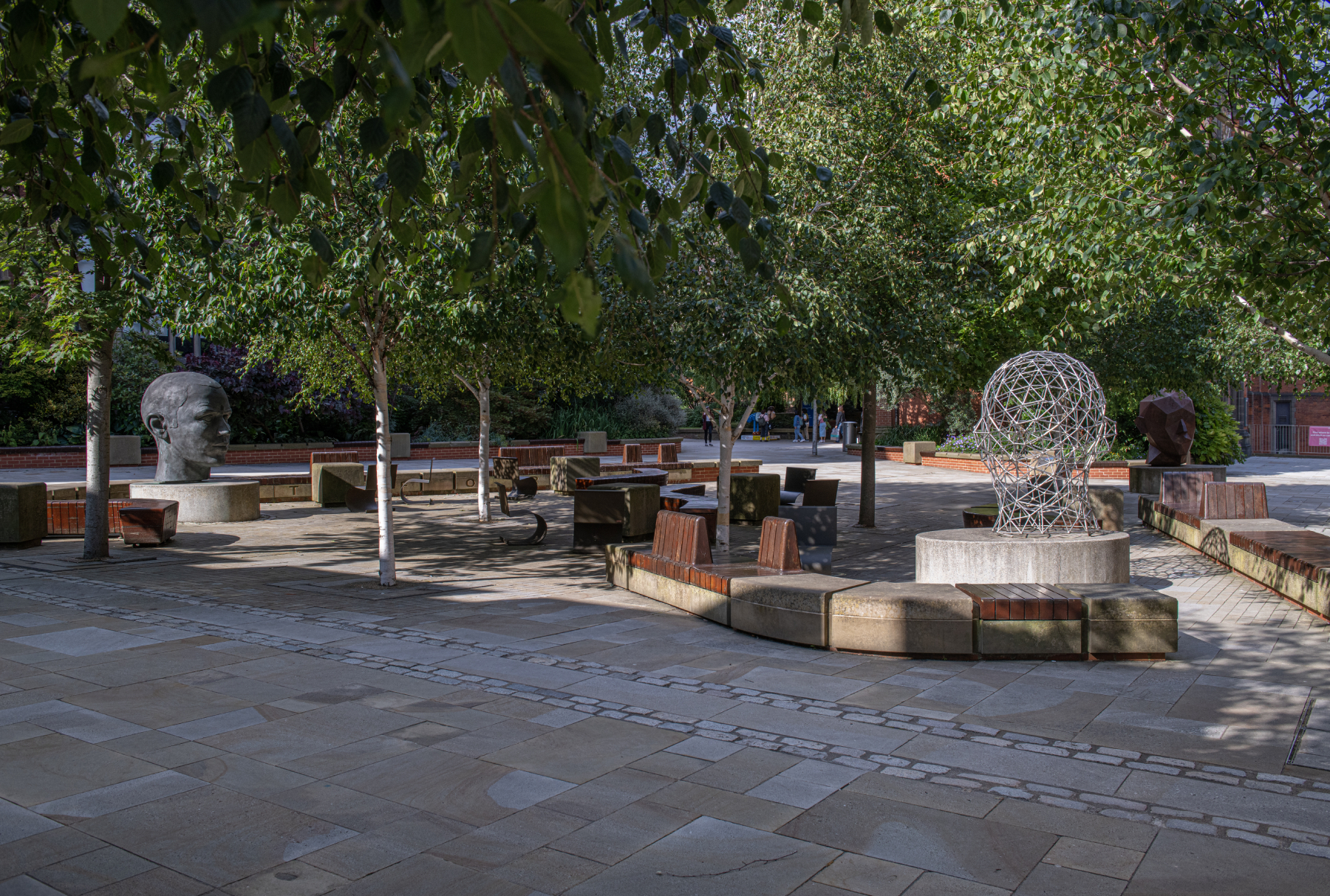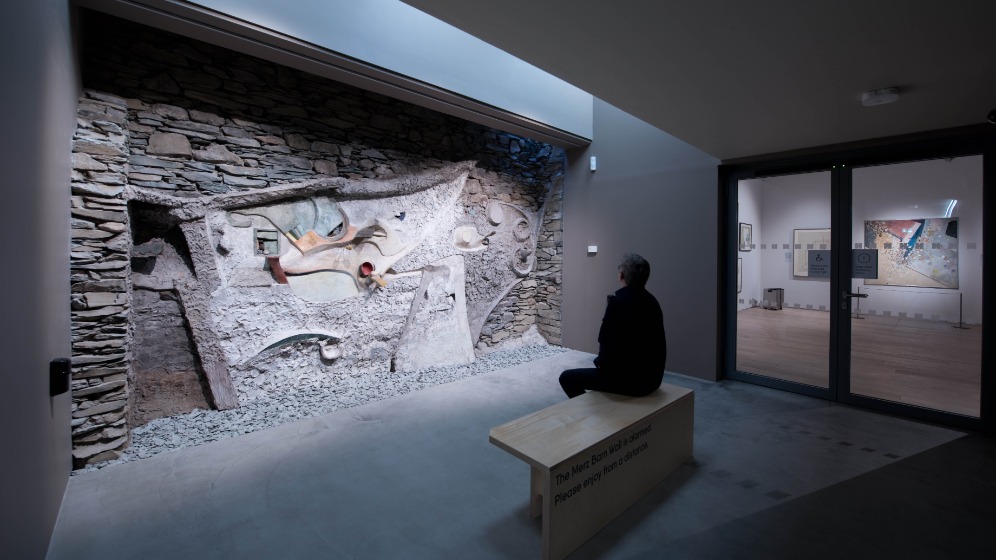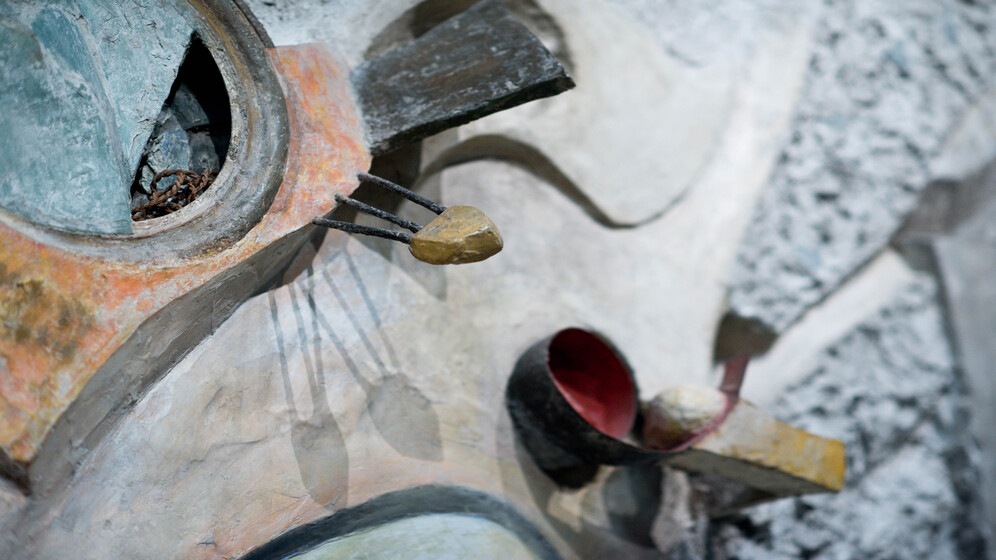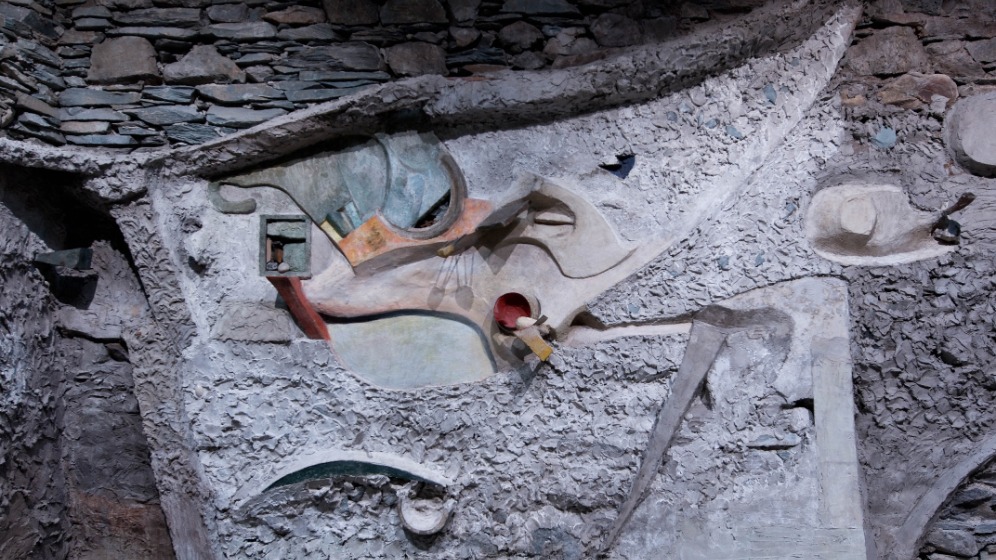The Merz Barn Wall by Kurt Schwitters
Discover Kurt Schwitters’ Merz Barn Wall artwork at Newcastle University and learn about its artistic and historical significance.
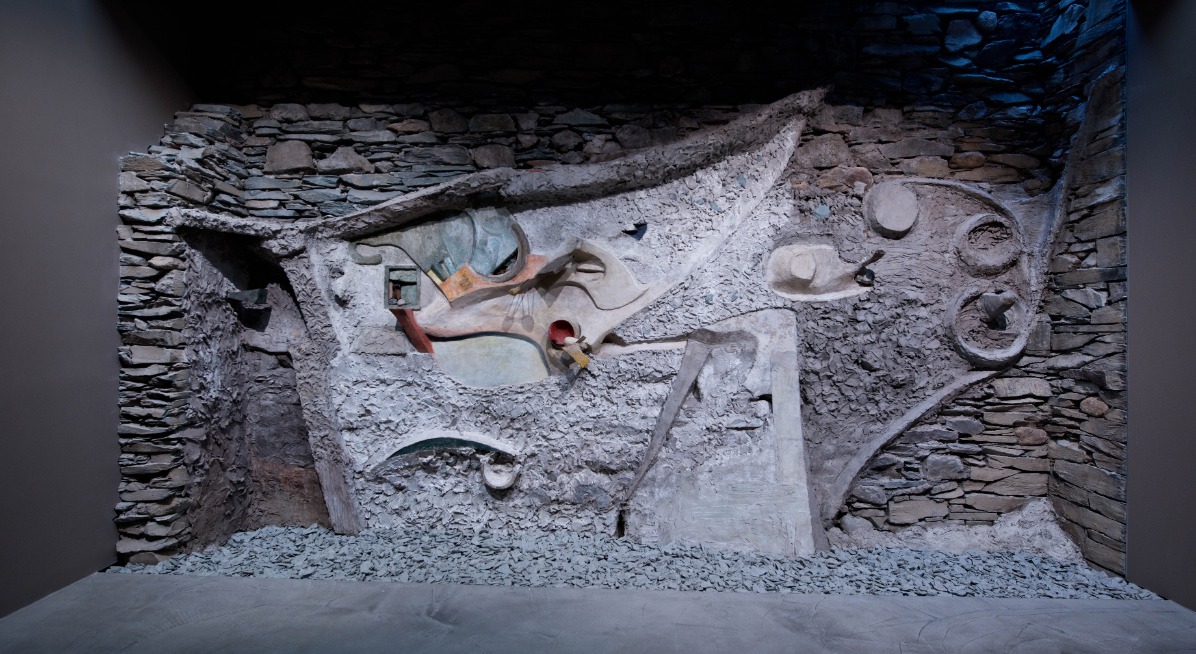
The artwork
Permanently installed in Newcastle University’s Hatton Gallery, Kurt Schwitters’ Merz Barn Wall is a particularly significant piece of 20th-century art. Created as part of a much larger construction in 1947–48, it was initially constructed in a stone-built barn, near Ambleside in the Lake District.
Based on the idea of collage, The Merz Barn Wall incorporates found items and materials, as well as paint and decorator’s plaster. When asked about the meaning of his piece, Schwitters simply replied: “All it is, is form and colour, just form and colour.”
This innovative and extremely unusual piece of art was unfortunately left unfinished when Schwitters passed away in January 1948.
The Merz Barn Wall was given to Newcastle University in 1965.
The move to The Hatton Gallery
An exhibition of Schwitters’ unique work – including sculpture, collage and paintings – was held at The Hatton Gallery in 1958. At this time, The Merz Barn Wall was stuck in a deteriorating building in the Lake District, contending with less-than-ideal conditions.
Concerned about the future of this one-of-a-kind artwork, artist and art historian Lawrence Gowing – then Professor of Fine Art at the University – reported this situation to the Arts Council of Great Britain. He spoke of, “A building in Ambleside, now rapidly disintegrating, which housed a construction by Schwitters [that] should be preserved”.
Two artists – Kenneth Rowntree and Richard Hamilton, who were both teaching in the Fine Art department at Newcastle – encouraged the University’s involvement in the preservation of The Merz Barn Wall.
This collective desire to save Schwitters’ work eventually led to the piece being detached from the barn wall and transported to the University. The Merz Barn Wall was then permanently installed in The Hatton Gallery, here in Newcastle.
On 26 March 1965, Harry Pierce – the barn’s owner – signed a formal Deed of Gift to Newcastle University, officially transferring ownership of the piece.
The artist
Kurt Schwitters was born in Hanover, Germany in 1887. He had an extremely varied career, working across multiple mediums and professions, including:
- visual art
- poetry
- typography
- graphic design
Although affiliated with a number of avant-garde art movements – such as Dada, Der Sturm and De Stijl – the majority of Schwitters’ artwork belongs to his own individual movement: ‘Merz’.
This word was lifted from the centre of the word ‘Commerzbank’ (meaning commerce bank) found in a section of print used in one of Schwitters’ collages – known as Merzbild or Merz pictures.
‘Merz’ attempted to lessen the gap between life and art, using the medium of collage to remove original context and create something anew. Schwitters used found and discarded everyday items to create a 'total work of art' or Gesamtkuntswerk.
Schwitters saw collage as a way to bring order to a chaotic situation. He saw his work as, “A site of transcendence that promised the harmony and structure sorely missing in Weimar Germany”.
Despite a (short-lived) association with the highly political Dada movement, Schwitters didn’t believe in diluting the purity of art with the mess of the political landscape, especially within a post-World War I society.
The Merz Barn Wall was not Schwitters’ first Merzbauten or ‘Merz Building’. He constructed the original form of this unusual artwork in his Hanover home in 1923, creating a series of themed grottos that spanned across eight rooms.
A number of these grottos were dedicated to other inspirational artists. However, this particular iteration of Merzbauten – named The Cathedral of Erotic Misery – was left unfinished when Schwitters moved to Norway in 1937. Tragically, it was destroyed by allied bombing in 1943.
In 1947, Schwitters was living in the Lakes, in exile. It is here that he began work on The Merz Barn Wall. He initially wanted to cover all four walls with artistic expression – however, his health began to fail.
Schwitters died just a few months into the construction of his masterpiece. The single wall he was able to finish is the part that you can see on display in The Hatton Gallery today
